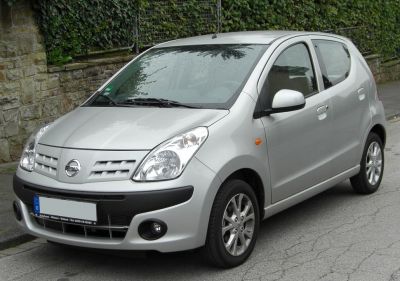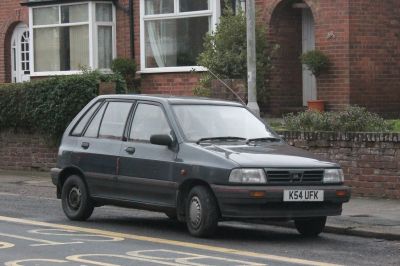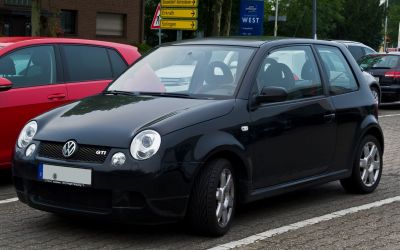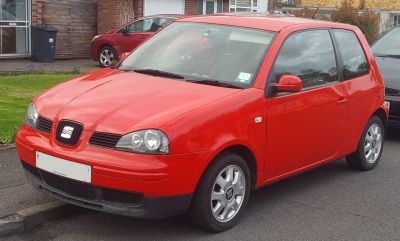 1990 Rover 100 (METRO) (XP) Dimensions, Size & Specs
1990 Rover 100 (METRO) (XP) Dimensions, Size & SpecsMeasurements of the 1990 Rover 100, engineered for optimal performance and comfort
| Dimensions | |
|---|---|
| Length: | 3521 mm138.6 in11.6 ft |
| Width: | 1550 mm61.0 in5.1 ft |
| Height: | 1377 mm54.2 in4.5 ft |
| Trunk Capacity: | 229 liter8.1 cu ft |
| Trunk Capacity (Max): | 552 liter19.5 cu ft |
| Weight Specifications | |
| Curb Weight: | 840-855 kg1852-1885 lbs |
| Maximal permitted Weight: | 1290-1310 kg2844-2888 lbs |
| Tire Specifications | |
| Rims Size: |
|
| Tire Sizes: |
|
The Rover 100 (METRO) XP generation, produced between 1990 and 1998, is a quintessential example of a compact hatchback designed for city driving and efficient mobility. With a length of 3521 mm (138.6 inches), a width of 1550 mm (61 inches), and a height of 1377 mm (54.2 inches), this model offers a small footprint ideal for urban environments while maintaining practicality. The Rover 100's curb weight ranges between 840 to 855 kg (1852 to 1885 pounds), contributing to its nimble handling and fuel efficiency. Its maximum gross vehicle weight falls between 1290 and 1310 kg (2844 to 2888 pounds), reflecting its lightweight construction typical of early 1990s hatchbacks. The luggage capacity stands at 229 liters (8.1 cubic feet) with the rear seats upright, expanding significantly to 552 liters (19.5 cubic feet) when the rear seats are folded down, making it versatile for carrying larger loads. Equipped with 13-inch rims and tires sized 155/65 R13 or 185/55 R13, the Rover 100 (METRO) XP ensures a balanced ride and adequate road grip. This generation of the Rover 100 maintained the legacy of the original Metro while incorporating subtle enhancements, making it a preferred choice for drivers seeking a reliable, compact, and economical hatchback during the 1990s. Its compact dimensions compared to contemporaries make it an excellent subject for car size comparisons focused on small hatchbacks.
Discover the standout features that make the 1990 Rover 100 a leader in its class
Have a question? Please check our knowledgebase first.
The 1990-1998 Rover 100 (Metro XP) measures 3521 mm (138.6 inches) in length, 1550 mm (61.0 inches) in width, and 1377 mm (54.2 inches) in height. These compact dimensions make it a small hatchback well-suited for urban environments and tight parking spaces, contributing to its nimble handling and ease of maneuverability in city traffic.
The Rover 100 (Metro XP) has a curb weight ranging from 840 to 855 kilograms (approximately 1852 to 1885 pounds). The maximum allowable weight is between 1290 and 1310 kilograms (about 2844 to 2887 pounds). This lightweight design helps improve fuel efficiency and makes the car agile, ideal for both city driving and light commuting.
The Rover 100 (Metro XP) offers a luggage capacity of 229 liters (about 8.1 cubic feet) with the rear seats in place, suitable for small to moderate loads such as groceries or a few suitcases. When the rear seats are folded down, the luggage capacity expands significantly to 552 liters (around 19.5 cubic feet), giving you more room to transport larger items or more cargo for trips.
The Rover 100 (Metro XP) comes with 13-inch rims, which are paired with tire sizes of either 155/65 R13 or 185/55 R13. The smaller tire profile helps maintain a comfortable ride quality and better fuel economy while supporting the car's compact size and handling characteristics.
Yes, the Rover 100 (Metro XP) easily fits into a standard garage. With a length of 3521 mm (138.6 inches) and width of 1550 mm (61.0 inches), it is compact enough to be parked comfortably inside a typical single-car garage, which usually offers dimensions around 6 meters (20 feet) deep and 3 meters (10 feet) wide. Its small footprint allows for easy parking and maneuvering in tight spaces.
The Rover 100 (Metro XP) was essentially a continuation and evolution of the Austin Metro platform, with similar compact dimensions to its predecessor to maintain its reputation as a small city car. The length around 3521 mm (138.6 inches) and width of 1550 mm (61.0 inches) did not change significantly from the previous generation, prioritizing practicality and ease of driving in urban settings rather than increased size or bulk.
Compared to other 1990s hatchbacks like the Ford Fiesta, Peugeot 205, or Volkswagen Polo, the Rover 100 (Metro XP) is similarly sized, with its length of 3521 mm (138.6 inches) and width of 1550 mm (61.0 inches) fitting well within the subcompact class. It stands out with its lightweight curb weight and reasonable luggage space, making it competitive among small city cars of the era.
The Rover 100 (Metro XP) has a height of 1377 mm (54.2 inches), which is typical for cars in the supermini category. While this relatively low height keeps aerodynamic drag low and enhances stability, it does limit headroom for taller passengers compared to higher-profile vehicles. However, the design balances compactness with sufficient interior space for most occupants within its class.
The maximum permissible weight of the Rover 100 (Metro XP) ranges from 1290 to 1310 kilograms (2844 to 2887 pounds). This figure includes the vehicle’s curb weight plus passengers, cargo, and fluids. Staying within the max weight ensures safe handling, effective braking, and overall vehicle reliability while optimizing fuel efficiency and tire wear.
Despite its compact dimensions, the Rover 100 (Metro XP) offered practical features suited to urban driving such as a reasonably spacious luggage area that expands with foldable rear seats, lightweight construction improving fuel efficiency, and nimble handling characteristics. It also had simple yet effective mechanics, making it a popular choice for city dwellers and first-time car buyers in the 1990s.
Discover similar sized cars.

| Production: | 2009-2013 |
|---|---|
| Model Year: | 2009 |
| Length: | 3565 mm140.4 in |
| Width: | 1600 mm63.0 in |
| Height: | 1470 mm57.9 in |

| Production: | 1994-2000 |
|---|---|
| Model Year: | 1994 |
| Length: | 3565 mm140.4 in |
| Width: | 1605 mm63.2 in |
| Height: | 1460 mm57.5 in |

| Production: | 1991-2000 |
|---|---|
| Model Year: | 1991 |
| Length: | 3565 mm140.4 in |
| Width: | 1605 mm63.2 in |
| Height: | 1450-1460 mm57.1-57.5 in |

| Production: | 1998-2005 |
|---|---|
| Model Year: | 1998 |
| Length: | 3529 mm138.9 in |
| Width: | 1620-1640 mm63.8-64.6 in |
| Height: | 1455-1470 mm57.3-57.9 in |

| Production: | 2000-2005 |
|---|---|
| Model Year: | 2000 |
| Length: | 3529-3551 mm138.9-139.8 in |
| Width: | 1621-1639 mm63.8-64.5 in |
| Height: | 1460 mm57.5 in |
